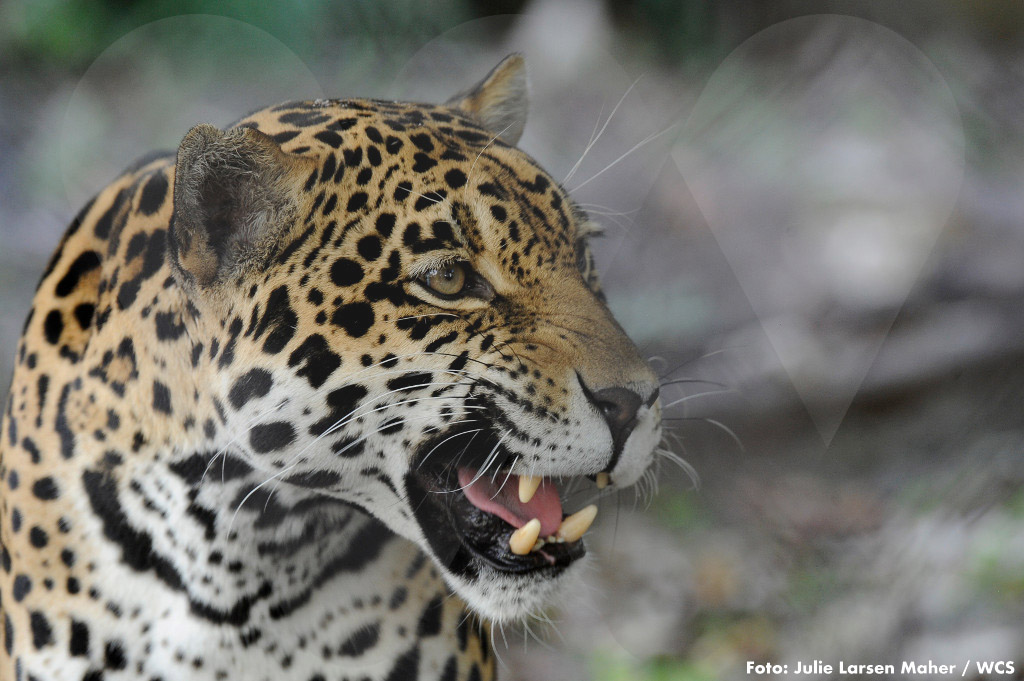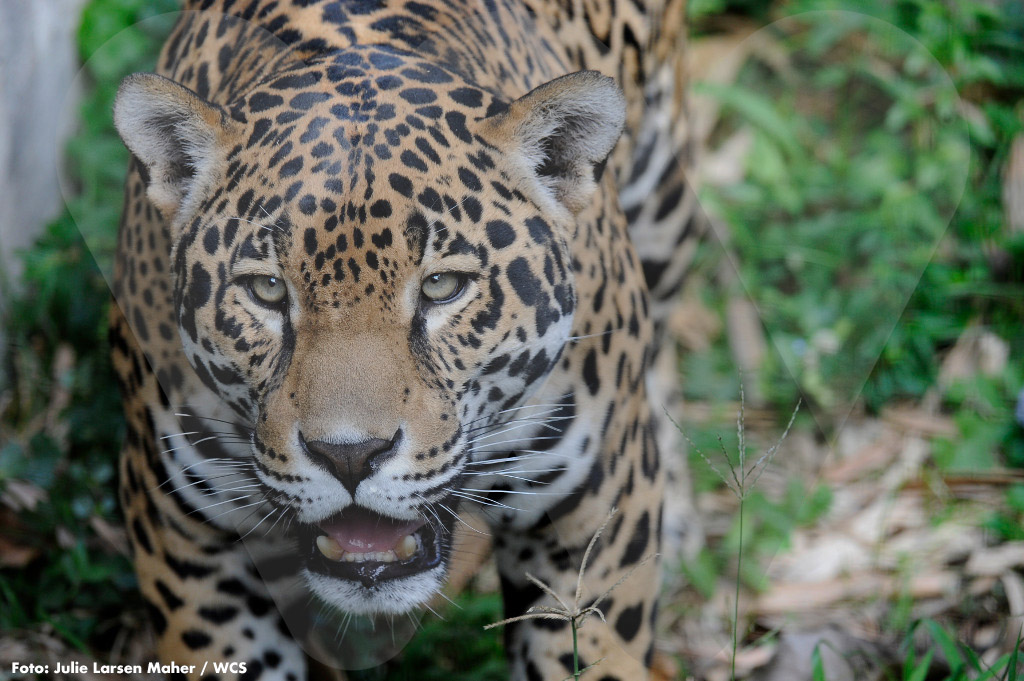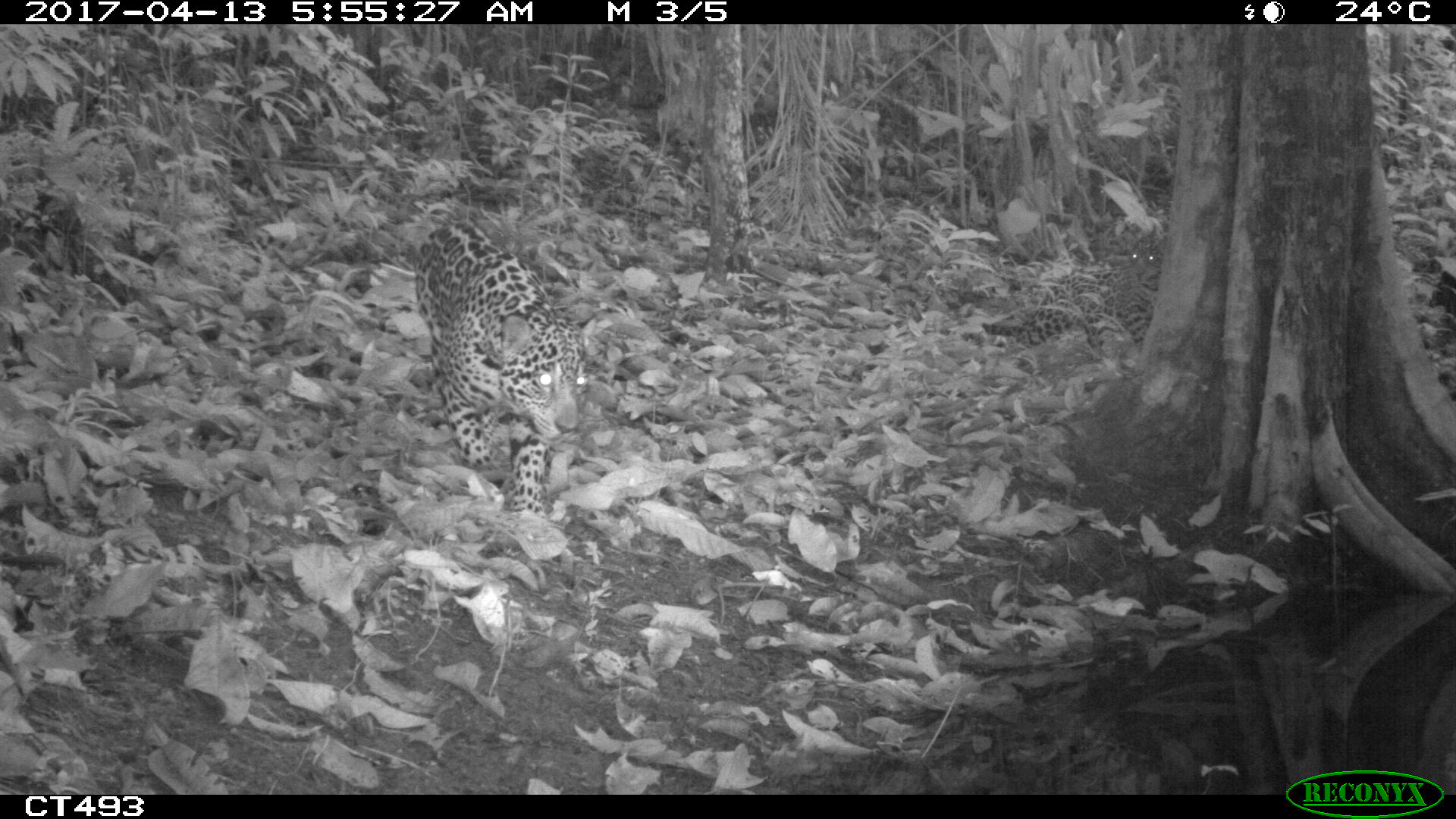An investigation in which WCS Colombia participated highlights wetlands as important ecosystems for the subsistence of the felid, whose populations are greatly affected because deforestation and the expansion of agriculture and stockbreeding have deteriorated its habitat.

In 2018, in an attempt to support the conservation of the biggest felid in the Americas, WCS signed the Jaguar 2030 plan that seeks to strengthen the corridor where it lives - that goes from Mexico to Argentina, passing through Colombia - guaranteeing 30 critical landscapes for its stability in the forthcoming decade.
This effort has the endorsement of the Ministries of the Environment of each one of the countries of the Continent, of the World Wide Fund for Nature and of The United Nations Development Programme (UNDP) among others, that have tried to clear the future for this emblematic cat that is under threat, because a big part of its forests has been affected by deforestation and agricultural expansion. Furthermore humans, now closer to its wild habitat, have entered into conflict with the animal, which has resulted in the organization of brigades by many peasants to hunt it or kill it when they face the possibility of an attack to their domestic or productive animals.
And, in this intent to protect Panthera Onca, as it is scientifically known, a diagnosis emerged, that could be transformed into an alternative to be applied in the development of the cross-border strategy for the future of the species.

It is an investigation published in the magazine Plos One, in which WCS Colombia participated, that points out that, in the effort to save the jaguars, wetlands could be significant ecosystems that should be protected to attain that conservation objective.
“We, therefore, propose that wetlands and riparian buffers receive greater consideration as keystone habitats for the jaguar”, says the investigation, concentrated in 10 municipalities of Bolívar, Middle Magdalena and Antioquia, with an altitudinal range of 40 to 200 meters above sea level and with seasonally flooded swamps, lakes and rivers.
The study was titled Wetlands are keystone habitats for jaguars in an intercontinental biodiversity hotspot. Germán Forero, scientific director of WCS Colombia and Leonor Valenzuela, coordinator of analysis and synthesis of the institution, participated in its elaboration. The investigation was led by Joe J Figel, of the biology department of the University of Central Florida; Sebastián Botero, of the mammalogy investigation group of the University of Antioquia; Juan David Sánchez Londoño, of the Faculty of Science and Biotechnology of the CES University and Fundación Biodiversa Colombia and Reed Noss, of the Florida Institute for Conservation Science.
Good food offer
Part of the conclusions obtained explain that the natural coverage for the jaguar is presently fragmented, among other things, as a consequence of expanding cattle ranching, increase of oil palm plantations, forest fires, road construction, mining, illicit crops or illegal felling.

That is why a greater protection of the wetlands and their riparian buffer zones, a matter already established by Colombian law (Resolution No. 200.41.11–1130, of 2011), could facilitate jaguar persistence in fragmented landscapes and areas of oil palm and cattle pasture development.
However, this diagnosis appears when it is a known fact that the wetlands with some level of protection are mainly located in the Amazon River basin. Beyond this region, the favorable policies for the conservation of these floodable areas are not many, and much less in the three study areas (Bolívar, Middle Magdalena and Antioquia).
Leonor Valenzuela, WCS Colombia investigator, explains that throughout the investigation - for which images taken by 70 camera traps, located 30 centimeters above the ground and placed at five kilometer intervals, were used - whenever registers or photographs were taken in wetlands or their surroundings, prowling jaguars were also captured. Fifteen thousand hours of camera traps were obtained, one of largest studies for this animal in terms of spatial coverage and sampling effort with this type of technology.
In total, 12 unique adults were photographed and jaguars were detected at 25 of the 70 camera trap stations. “We never photographed jaguars at sites without wetlands”, states the document literally.
“Part of the explanation is that these zones continue being very important for the jaguar and for the maintenance of its populations”, says Valenzuela. And she adds that the reason for this, in part, is that those aquatic ecosystems have many and very varied resources available for their nourishment, among those several types of reptiles (that in floodable sites of the San Jorge and Cauca Rivers constitute up to 36% of their diet), such as caimans or river turtles. This, however, is a topic that requires further analysis, as it was not the approach of this investigation.
In territories with pastures or that have been transformed for stockbreeding, jaguars do not have the same abundance of food for their maintenance. “The jaguar can cross them, but remain there permanently or a constant occupation of the territory is not a possibility”, explained Valenzuela.
In the San Bartolo farm, in Yondó (Antioquia), with wetlands, eight jaguars were registered, a number deemed important.

“With the cameras, we were able to prove that there is a good occupation of jaguars inasmuch as swamps or lakes are well maintained and, especially, when they cover 20% of the radius of an area of approximately three square kilometers”, added Valenzuela. Similar ratios have been ratified in Brazil, specifically in El Pantanal, considered the world’s largest wetland.
Another important conclusion is that, even though the mammal can roam in spaces cultivated with oil palm, animal occupation decreases in these very uniform places and where the amount of resources is low. This is very evident in Middle Magdalena, a highly transformed region.
“It is pressing to compile information on jaguars in oil palm landscapes in order to guide the identification and implementation of the appropriate planning for the use of the land and zoning measures”, explain the investigators.
Jaguars are avoiding large scale plantations, they claim, because the use of the habitat decreased in some places when total coverage of this plant was reached. It is also necessary to assess the indirect effect of these crops, as their big demand of water could affect the wetlands and, consequently, alter the jaguars´ use of them.
In short, all this consideration results evident and appealing if the country decides to give an opportunity of protection to the species, the disappearance of which would generate a natural imbalance, as it keeps the rodent population at bay. Without a natural predator, other species could increase as much as to affect the growth of plants, the renewal of forests and springs.
Its conservation, furthermore, goes beyond an environmental approach; it is a commitment with the priceless cultural patrimony embedded in this carnivore, the third in size in the world after the tiger and the lion.
.JPG?ver=2020-01-14-215146-150)